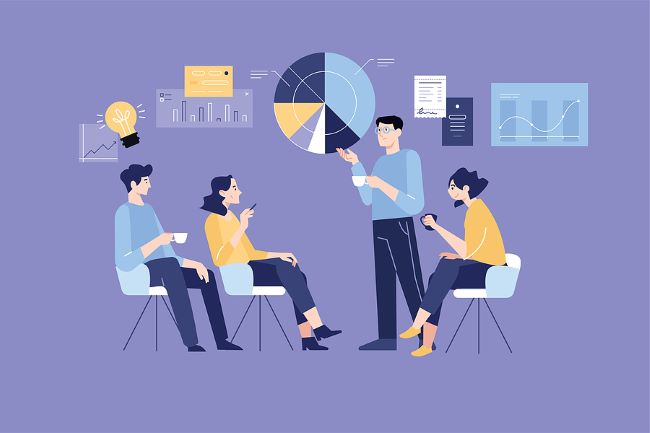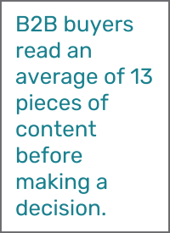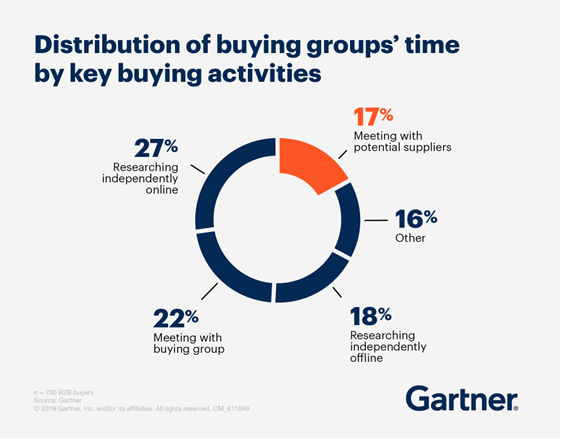How to Adjust Your Business-to-Business Marketing Strategy When Budgets Are Tight

When budgets are tight, every dollar counts. The World Bank says we might be facing a global recession and the World Trade Organization says trade growth will likely slow in the second half of 2022, staying low in throughout 2023. For business leaders, this means it’s time to prepare for the possibility of a prolonged economic downturn.
This doesn’t mean business leaders should cut marketing. In fact, to thrive during an economic downturn, efficient marketing is essential. It’s true that your budget is tight, but so are the budgets of your target audience. As a result, you have to fight extra hard to convince potential clients they should spend their limited funds on your products and services.
You also need to weigh your spending decisions. Should you attend 10 conferences? Should you pay for advertising in industry journals? Should you redirect some of those dollars toward content marketing?
You will need to look beyond the initial marketing investment to determine:
- What is the average cost per lead for each marketing expenditure?
- What role does each marketing expenditure play in the buyer’s journey? For example, does it spark interest, develop preference or build trust?
- For how long will the marketing expenditure provide value? Is it something that can be multipurposed and used for years, or is it one and done?
When the economy gets challenging, content marketing often outperforms because it can be developed at a comparatively low cost, and it lasts for a very long time – usually at least two or three years – sometimes much longer.
Another key advantage is that content doesn’t require in-person consumption. When travel budgets are cut, buyers can still get the information they need if you have thoughtful content resources readily available.
The Role of Content in B2B Buying Decisions
Some purchases require more consideration than others. For example, if you buy a new flavor of cereal and you don’t like it, you might be out a few bucks, but it’s not really a big deal. When the stakes are low, consumers can make impulse buys, and a single ad might be enough to sway their purchasing decision.
This is not the case when it comes to big business purchases. For example, when a business is looking for a new employee benefits partner, the stakes are high. It takes a lot of time and effort to transition a complex insurance program. The wrong choice could lead to employee dissatisfaction and higher premiums for years to come. That’s why B2B buyers can’t rush into purchase decisions. They must carefully consider their options and the possible consequences.
Given the stakes, it’s not surprising that B2B buyers tend to read a lot of content before they make a purchasing decision. According to Content Really is King: Content Consumption in the B2B Buyer’s Journey, a report from FocusVision (now Forsta), B2B buyers read an average of 13 pieces of content before making a decision.
In fact, content may play an even more important role than meetings with potential partners. In its examination of buying activities, Gartner found that buyers only spend 17% of their time meeting with potential suppliers. However, they spend 27% of their time conducting independent research online. Think about that. Does your content pave the way for potential buyers who are researching your company online?

Other Advantages Made Possible by Content
B2B buyers use content to inform their buying decisions. Therefore, if you want to reach these buyers, you need to provide them with the type of information they’re looking for. This is the obvious purpose of content, but the potential advantages don’t stop there. In fact, content works overtime in unexpected ways:
- Preference development: Every time a B2B buyer looks at a piece of content, they see the name and logo of the company that produced it. The mere exposure effect alone can make B2B buyers think more highly of the company in question. This is a common psychological phenomenon in which people tend to show a preference for things that are familiar. Just being exposed to something enough times can make you more inclined to like it. If B2B buyers see your logo multiple times, they’ll become familiar with your company, which can make them respond more favorably to you.
- Trust building: But there’s more to quality content than mere exposure. You’re not just blasting your company’s name – you’re providing useful information. As a result, B2B buyers will start turning to you for expert advice and practical tips. They’ll start to trust you, and, as people tend to choose to work with businesses they trust, this can help you close sales.
- Lead generation: If you require a form as part of the content download process, also known as gating your content, your website can generate leads. Once prospects know you have useful information to offer, they’ll be more likely to provide their contact information in exchange for more information.
Rethink Your B2B Marketing Strategy
Don’t wait for times to get tough – start strengthening your B2B marketing strategy now.
- Think about your marketing tactics from the buyers’ perspective. Instead of putting your company first, focus on your target audience. What problems do your buyers face?
- Consider the problems your prospects are trying to solve. What guidance can you offer? By incorporating thought leadership into your content strategies, you can give buyers the information they crave.
- Think about your sales funnel. How can you strategically use content in each phase of the buyer’s journey? This roadmap can help.
- Consider your existing clients. How can you use content to elevate their experience, enhance the relationship and bolster retention rates?
- Rethink your marketing mix. Focus on activities with a low cost-per-lead – especially if travel budgets could be cut.
- Keep the big picture in mind. The economy will always have its ups and downs. Focus on your long-term goals and be consistent with your marketing efforts. Remember the snowball effect.
- Fine tune your strategies. With any marketing campaign, it’s important to use analytics to assess your results. That said, remember that marketing analytics are rarely black and white. If your prospect reads 13 pieces of content and had two sales conversations before selecting you as their partner, which marketing effort gets credit for the sale? The answer is … it’s complicated. In B2B sales, buying decisions are almost always the result of the cumulative effect of several marketing activities.
Need a B2B Content Partner?
Inbound Insurance Marketing can provide the quality content you need to power your B2B marketing strategy. From blog posts and infographics to white papers and case studies, we can help you get insurance content right the first time. Get in touch.
